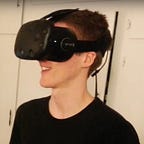Followers of the virtual reality industry know the Oculus Rift is going to be a big hit. However, how big should we expect that market to be in its first year?
As of August 15th, over 60,000 Oculus Rift Development Kit 2s have been ordered. Including 60,000 sales of the Development Kit 1, over 120,000 Oculus prototypes have been sold in the past year and a half. Given that Oculus made it VERY clear that the DK2 should not be bought by consumers, this is a promising start. If Oculus can sell over 100,000 of an unfinished product when targeting only developers, we must consider how many more sales will occur when a finished Consumer Version 1 (CV1) is released and the advertising machine of Facebook enters into overdrive. A 10 fold increase in market size is a laughable underestimation, but even such a pessimistic outlook places the market close to a million devices AT MINIMUM in its first year. Given the uniqueness of the Oculus experience, a more moderate outlook of 6–10 million devices in the first year is more likely, placing it in line with the number of first-year PS4 sales (approximately 13.4 million). At the high end, it is entirely possible that Oculus sales could far surpass PS4 sales, since the device offers an entirely novel experience, while the PS4 is an incremental improvement to an existing platform. However, this novelty will also work against the speed of adoption, since a powerful computer is required to run the Rift. With this in mind, let’s take a look at the state of the PC gamer market, since the greatest obstacle to immediate widespread Oculus adoption will be computing power.
Currently, the hardware market for PC games is worth $21.5 billion annually. This figure includes all computers and parts sold specifically for PC gaming. If we assume $2000 per gamer for computer and accessories (a likely overestimation of cost), that’s 10.5 million people purchasing PC gaming setups each year (a number that is on the rise). Nvidia, the leading graphics card manufacturer (with over 60% of market share) nets over $4 billion in revenue annually, meaning they sell 4–8+ million PC graphics cards a year, and that number is rising.
It took 6 years for the smartphone market to reach a billion units, and over 300 billion in hardware revenue. Ironically, the increased hyperconnectivity created by smartphones will help drive widespread VR adoption. Considering the uniqueness of the VR experience and widespread application outside of gaming, I would expect a similar growth curve. The need for more expensive computing power may slow this somewhat, but considering the developments being made with mobile VR such as the Gear VR, these current hardware limitations are unlikely to slow adoption by much. As the market matures past the first year, hardware designed to work cheaply and efficiently with the Oculus and other VR devices will drastically bring down the cost of PCs capable of rendering high-definition graphics at high frame rates. I would not be surprised if we saw an Oculus “console” PC built to make choosing a VR-ready computer easy for the consumer.
So, given these figures, I expect the Oculus hardware market to be around 10 million units in its first year of release, and for that market to continue along a path of exponential growth as better computing hardware becomes more ubiquitous, and more software enters the marketplace, eventually replacing our current desktop computing experience.
